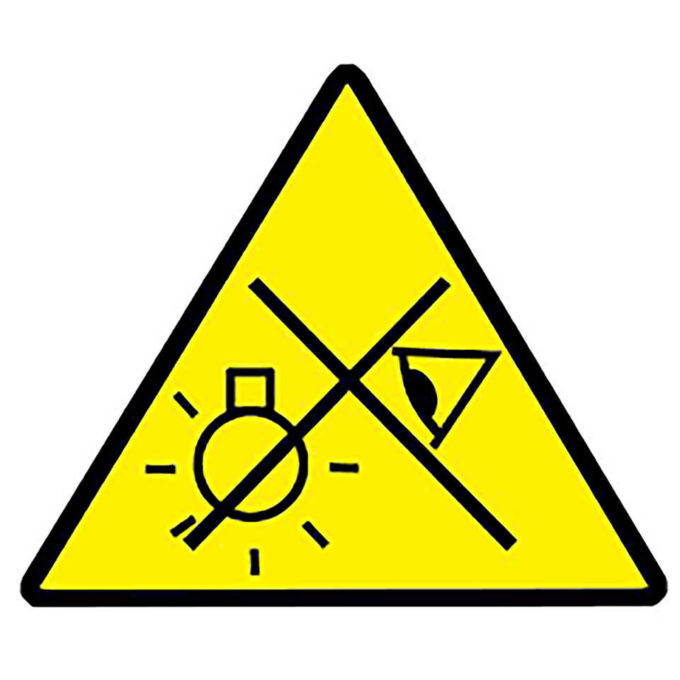Photobiological safety
Looking directly into a light source can cause photochemical damage to the retina. Photobiological safety deals with these potential hazards to the eye (and skin) from artificial light sources. This applies in particular to the blue light component of the light source. This is why it is also referred to as blue light hazard (BLA).
The classification of blue light hazard depends on three factors,
1. the brightness of the light source, the so-called luminance,
2. the duration of exposure, and
3. the spectral composition of the light, especially the proportion of blue light.

Risk assessment
Modern LEDs are very bright and achieve a very high luminous intensity due to their small size. In addition, LEDs have a higher proportion of blue light in the 400-500 nm range compared to conventional light sources. This means that it may be necessary to determine their photobiological safety.
The EN 62471:2008 “Photobiological safety of lamps and lamp systems” is decisive for testing. For visible LED sources, the IEC /TR 62778 (Blue Light Hazard, BLA) has specified the assessment of blue light risk since 2014.
Risk groups
| Risk group according to EN 62471 |
Risk group according to TR 62778 |
Photobiological hazard | Labeling requirement* | Comments |
|---|---|---|---|---|
| RG0 | RG0 unlimited | No risk | None | |
| RG1 | RG1 unlimited or RG1, Ethr=…lx |
Low risk | None | If the risk is so low that it is safe even if unburned, TR 62778 also refers to “RG1 unlimited”. Otherwise, a threshold illuminance value (Ethr) is specified up to which RG1 is complied with. |
| RG2 | RG2 | Medium risk, avoid prolonged direct viewing | Warning notice “Do not look directly into the light” | |
| RG3 | RG3 | High risk, potentially harmful even with short exposure (Not intended for general lighting) |
Warning sign, technical protective measures (shielding, access protection) |
*Measuring distance 200 mm (lamp) or 500 mm (light)

